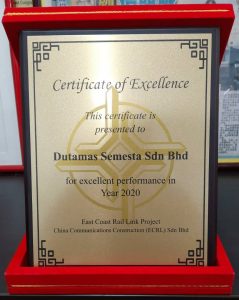
In some cases, prices can increase dramatically due to scarcity or political unrest in countries producing certain raw materials (such as oil). The cost of transportation is increasing, putting a strain on manufacturing costs. This is especially true when dealing with commodities such as steel, coal, and other minerals that don’t grow on trees (or anywhere else). There are many reasons why this is happening, and it is essential to understand the factors contributing to the increase in manufacturing costs.
What Are Manufacturing And Non-Manufacturing Costs? Cost of manufacturing

Yes, the formula can be adjusted based on the specific needs of the manufacturer. However, it is important to accurately track and record the accounting costs for the production process to ensure the accuracy of the calculation. When executing production commands, VIindoo software allows you to record the actual amount of the material consumed. When completing the production order, the system of calculating the cost of raw materials directly based on the actual number recorded. This kind of actionable feedback helps companies make informed decisions, leading to a happier, more favorable bottom line.
- When companies regularly track the total manufacturing cost, they get a better idea of areas to save expenses and eliminate wasteful spending.
- Even if they provide similar quality goods, there can be a significant difference between what they charge due to their different production costs.
- The first thing you have to do is identify the manufacturing overhead costs.
- The shortage of skilled labor has led to increased wages across many industries, but not everyone has been able to keep up with these wage increases.
- Regarding indirect labour costs, these are wages paid to employees who weren’t physically involved in manufacturing but still played some part in the process.
- Kavitha Simha is a productivity author and researcher, passionate about finding smarter ways to manage time.
Calculate the direct labor hours
Direct labor cost is computed by multiplying the total hours worked by the labor rate per hour, including any additional benefits or payroll taxes. “When a manufacturer begins the production process, Accounting Periods and Methods the costs incurred to create the products are initially recorded as assets in the form of WIP inventory. As the manufacturing process involves raw materials and finished goods, all of these are considered assets.

Can a company control its manufacturing costs?
- These indirect costs, also called factory or manufacturing overheads, include costs related to property tax, insurance, maintenance, and other indirect operations that support the production process.
- You can determine the cost of producing one unit by dividing the total manufacturing cost by the total number of units produced during a specific period.
- This total is often used to calculate the manufacturing overhead rate, which indicates the percentage of the company’s revenue that goes toward covering manufacturing overhead costs.
- Companies that manufacture in China or other countries where labor is cheap may offer lower prices than companies that manufacture in the United States or Europe.
- As a result, many companies have had trouble hiring qualified candidates and remain understaffed even after offering higher wages than competitors in their industry.
Changing production methods to better utilise raw materials is another way manufacturer can reduce direct material waste. To reduce manufacturing overhead costs, focus on improving efficiency, reducing waste, negotiating better supplier contracts, and investing in technology to automate tasks. Regularly reviewing supplier contracts and negotiating better terms can significantly impact your manufacturing costs. Suppliers often offer discounts for bulk purchases or extended contracts, which can reduce your material costs. Additionally, revisiting service contracts for equipment maintenance and utilities can uncover opportunities for cost savings. This concept suggests that as production volumes increase, the cost per unit of production tends to decrease.

Benefits of Calculating Total Manufacturing Cost
- Using this kind of software with a built-in manufacturing accounting system frees up managers’ time for activities that help actually grow the company.
- Having a clear idea of the total manufacturing cost helps you manage these expenses wisely through budgeting and financial planning.
- Direct costs in manufacturing are labor and material expenses directly tied to the production of goods.
- While the total manufacturing cost is related to COGM, they have distinct differences.
- For the company to be profitable, the revenue it makes must be more than the total expenses for its manufacturing costs and production costs combined.
It also includes any packaging materials that are essential to your finished product. Direct costs refer to any spending directly tied to the manufacturing process. Today, we’ll total manufacturing cost formula be delving into the total manufacturing cost formula and how to use it. Product price provides businesses with important insights to make effective decisions. The important thing to note is that the formula can be modified or adjusted depending on the specific needs of the manufacturer.


You can calculate your total manufacturing cost by adding the total cost of direct materials, direct labor, and manufacturing overhead. However, before using the total manufacturing cost formula to calculate your costs, you need to understand what each part of the formula means. The first step toward achieving these benefits is to know the different types of manufacturing costs. We’ve already identified manufacturing costs as direct material costs, direct labor costs and manufacturing overhead. The main components of total manufacturing cost are direct materials, direct labor, and manufacturing overhead. Conversion cost, as the name implies, is the total cost that Certified Bookkeeper a manufacturing entity incurs to transform or convert its direct materials into salable or finished product.
For example, a quality worker responsible for 20 work centers would have 5% of the employee’s salary applied to each separate work center’s indirect overhead). Total units produced is the total number of finished goods manufactured during a specific period. If you conclude that costs are as low as possible, but revenue is still struggling, the next step could be to alter your pricing. If you set prices too high, customers may go to competitors where they can find a better deal. Equally, if prices are too low, you won’t be generating the required revenue to make your business profitable.
Most companies establish a standard rate per hour that gives an estimate of what they expect to be the direct labor cost in normal conditions. For example, assume that the direct labor cost per hour for assembling baby car seats is $10, and the company expects to use 0.5 hours for the assembly of each car seat. If the company produces 1,000 units, the standard direct labor cost will be $5,000 ($10 x 0.5 x 1,000). If the work performed cannot be connected to a specific employee, then the wages paid are considered indirect. When tracking the total cost incurred for a specific project, the direct labor cost must be added since it could constitute a significant portion of the project.



